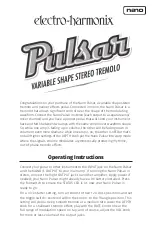
5
Overinflation may lead to permanent tracheal damage, rupture
of the cuff with subsequent deflation, or cuff distortion that
may cause airway blockage.
• Selection of a cuff inflation and deflation procedure is left to the
discretion of the physician, using currently accepted medical
techniques.
• Syringes, three-way stopcocks or other devices should not be
left inserted in the inflation valve for an extended period of
time. The resulting stress could crack the valve housing and
allow the cuff to deflate.
CAUTIONS:
• The Shiley Pediatric and Neonatal Tracheostomy Tube and obturator
are single patient use medical devices. Duration of single patient
use should not exceed twentynine (29) days. Decisions about
tracheostomy tube changes should be made by the responsible
physician or designate using accepted medical techniques and
judgement.
• To ease insertion and to guard against cuff perforation from sharp
edges of cartilage, the cuff should be pulled back. This can be
accomplished by first inflating the cuff. Then gently move the cuff
away from the distal tip of the cannula towards the neck plate
as the residual air is removed by deflation. Do not use any sharp
instruments such as forceps or hemostats that would damage the
cuff when manipulating it.
• Avoid pulling or manipulation of the cuff inflation line, as it is
designed to conduct and hold air as part of the cuff inflation system.
It is recommended that the cuff inflation line be maintained in a
position allowing for patient mobility without placing tension on the
linetoflange junction.
• Prevent lint or other particulates from entering the luer valve of the
pilot balloon.
• Extremes of movement may result in mucosal abrasion and transient
disruption of cuff seal.
• Lidocaine topical aerosol has been associated with the formation
of pinholes in PVC cuffs. Lidocaine hydrochloride solution has been
reported not to have this effect.
• Diffusion of nitrous oxide, oxygen or air can alter cuff volume and
pressure.
• Inflation of the cuff by “feel” alone or by using a measured amount
of air is not recommended since compliance is an unreliable guide
during inflation. Intracuff pressure should be closely monitored
Summary of Contents for Shiley NCF
Page 72: ...72 ShileyTM TaperGuard A B C NCF TaperGuard PCF TaperGuard PLCF TaperGuard Shiley 15 ru...
Page 74: ...74 NCF PCF PLCF 25 25 Shiley 29...
Page 75: ...75 15 Y 3...
Page 76: ...76 1 Shiley 2 1 3 4 5...
Page 77: ...77 6 7 8 9 10 11 12 13...
Page 78: ...78 1 2 3...
Page 81: ...81 PVC 15 MRI Y 3 cm 1 Shiley 2 1 3 4 5 6...
Page 82: ...82 7 8 9 10 11 12 13 1 2 3...
Page 114: ...114 ShileyTM TaperGuard A B C NCF TaperGuard PCF TaperGuard PLCF TaperGuard T Shiley 15 mm el...
Page 116: ...116 NCF PCF PLCF 25 cm H2O 25 cm H2O Shiley 29...
Page 117: ...117 luer PVC 15 mm...
Page 118: ...118 MRI 3 cm 1 Shiley 2 1 3 4 5...
Page 119: ...119 6 7 8 9 10 11 12 13...
Page 120: ...120 1 2 3...
Page 127: ...127 ShileyTM TaperGuard TaperGuard NCF TaperGuard PCF TaperGuard PLCF Shiley 15 luer ar...
Page 129: ...129 Shiley 29 luer PVC 15 Y 3...
Page 130: ...130 1 1 Shiley 2 2 1 3 3 4 4 5 5 6 6 7 7 8 8 9 9 10 10 11 11...
Page 131: ...131 12 12 13 13 1 1 2 2 3 3...
Page 132: ...132 ShileyTM TaperGuard A B C NCF TaperGuard PCF TaperGuard PLCF TaperGuard Shiley 15 mm bg...
Page 133: ...133 Shiley 1 1 I D O D Shiley TaperGuard PCF Shiley TaperGuard PLCF Shiley TaperGuard NCF 49 C...
Page 134: ...134 HCl NCF PCF PLCF 25 cm H2O 25 cm H2O...
Page 135: ...135 Shiley 29 PVC...
Page 136: ...136 15 mm Y 3 cm 1 Shiley 2 1 3 4...
Page 137: ...137 5 6 7 8 9 10 11 12 13...
Page 138: ...138 1 2 3...
Page 147: ...147 3 Shiley 1 29 PVC 15mm...
Page 148: ...148 MRI 3 cm Y 1 Shiley 2 1 3 4 5 6 7...
Page 149: ...149 8 9 10 11 12 13 1 1 1 2 1 2 2 3...
Page 150: ......
Page 151: ......






































